"Assault Weapons" Part 1: Definitions
Politicians came up with a scary sounding name for a common thing that they want to ban. Are we at all surprised?
It’s gun control season again, when progressive politicians roll out their talking points about hyper-lethal, military grade weapons that ordinary folks (that’s you and me) have no business possessing.
The focal point of their ire is often the ubiquitous AR-15 or one of its many variants. But the dingbats, now realizing that other guns exist, seek a ban on all things they deem “assault weapons.”
As discussed in a previous post, rifles of all types combined only account for a few hundred murders every year so banning the AR-15 would have little little to no measurable impact on year-over-year murders using firearms.
But if it’s not the AR-15 that’s the problem then it must be some big, ambiguous category of scary guns. How can we not be against something with “assault” in the name? Around here we care about details so we’re starting this topic by clearing up some confusion around what these weapons are, and equally importantly, why they exist.
To understand this topic we need to learn what is meant by assault rifle, assault weapon, and pistol (or handgun).
What’s an assault rifle?
The anti-gun folks use the term assault weapon because assault rifle has a clear definition - and one that the guns they want to ban don’t meet. From Assault Rifles and Their Ammunition: History and Prospects1 by Anthony G. Williams, an assault rifle is defined as:
A standard military rifle, capable of controlled, fully-automatic fire from the shoulder, with an effective range of at least 300 metres. (Williams)
The most important characteristic is controllable fully-automatic fire, and Williams clarifies why some other existing weapons don’t meet the definition. Sub-machine guns, for example, aren’t classified as assault rifles due to their limited power and range.
First, it excludes weapons designed around pistol cartridges (i.e. machine pistols and sub-machine guns - SMGs) as they only generate around 500 joules (J) muzzle energy (ME) and cannot meet the range requirement. (Williams)
Also excluded are all the .30 caliber rifles used during both World Wars because they’re too powerful to control in fully automatic fire. Note the definition also excludes rifles firing the current 7.62 mm NATO full power rifle cartridge (7.62 mm is .30 caliber).
Second, it excludes the traditional "full power" (FP) military rifle/MG cartridges such as the .303" (7.7 x 56R) British, the .30-06 (7.62 x 63) US, the 7.92 x 57 German, the 7.62 x 54R Russian and the 7.62 x 51 NATO (typically firing 10-12 g bullets at muzzle velocities (MV) of 750- 850 m/s and developing around 3,000-4,000 J), as these are so powerful that the recoil they generate is virtually uncontrollable by the average soldier using fully automatic rifle fire from the shoulder. (Williams)
Keep in mind that in combat it’s not necessary to kill every enemy soldier, just to incapacitate them. Essentially an assault rifle uses the least powerful cartridge that’s still effective, and gets its power from the ability to deliver controlled, fully-automatic fire.
Sturmgewehr 44 (StG 44)
Time for a little history lesson about the origin of the term assault rifle and the first weapon to carry the name.
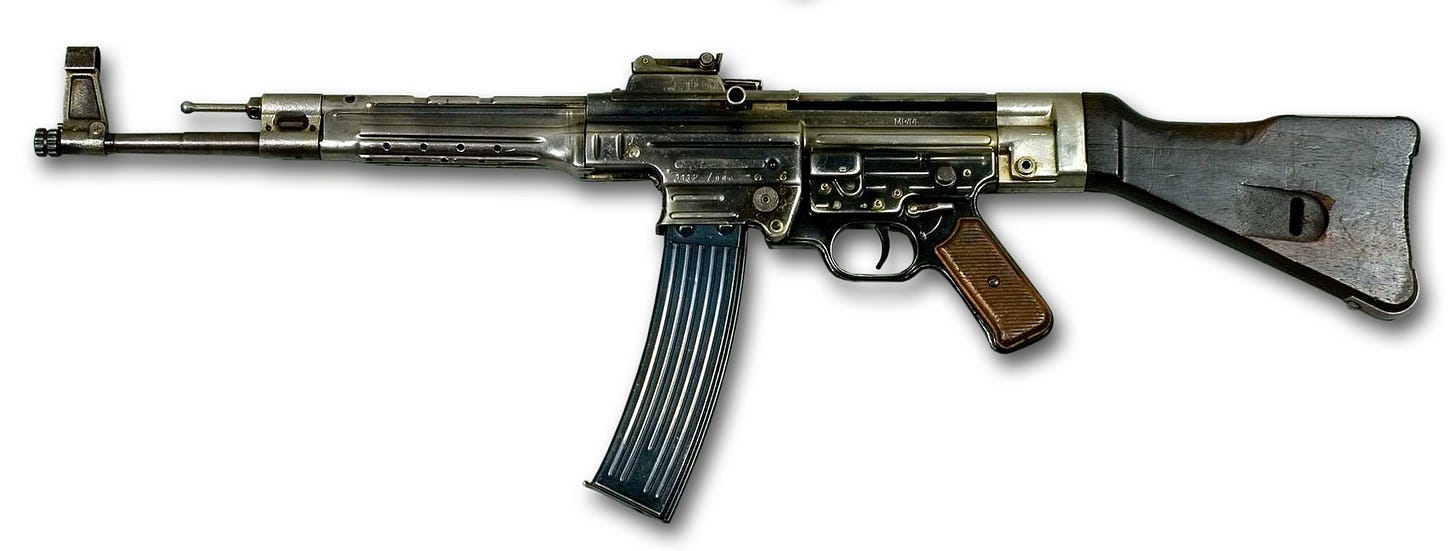
The Second World War was a time of very rapid advancements in military weapons and tactics, and the Germans were the first to recognize an important aspect of infantry combat (and design a rifle based on it - almost all useful rifle fire occurs at ranges of 300 meters or less.
The full power cartridges listed by Williams all have effective ranges in excess of 800 meters - a range at which trained snipers and competitive shooters hit targets, but the rest of us generally don’t.
This quote from M-16 Rifle Case Study2 by Col. Richard Hallock succinctly summarizes the development of the StG 44:
During 1942-44 the Germans developed the 1942 Sturmgewehr (assault rifle), the first successful automatic rifle for the individual soldier. They noted that a fully automatic rifle for the individual soldier would have to have reduced weight and reduced muzzle impulse for the shot bursts to be usefully accurate, for the cumulative recoil of automatic fire to be tolerable, and for the soldier to be able to carry enough ammunition within tolerable systems weight for support the higher consumption rate of automatic fire. Noting also from operational research that useful infantry rifle fire took place in combat at ranges not exceeding 300 meters, they designed a weapon around a lower muzzle impulse 8mm Kurz (short) cartridge. This weapon was the prototype for all successful automatic rifles for the individual soldier. (Hallock)
The StG 44 was originally designated the MP 43 (Maschinenpistole 43). Not everyone agrees on why the name “Sturmgewehr” was chosen, but a likely reason is the propaganda value:
Towards the end of 1944, the MP 44 was renamed the Sturmgewehr, or StG.44, usually transliterated as "Assault Rifle". This was a propaganda-driven decision made in order to raise the morale of the troops. The StG.44 was given increased publicity and was slated as a wunderwaffe, or "miracle weapon". (https://guns.fandom.com/wiki/StG_44)
[“Sturm” means “storm” and “Gewehr” is rifle, so “Sturmgewehr” is literally “storm rifle.” Just like in English, “storm” is also a synonym for “assault” hence the most accurate translation is “assault rifle.” For some reason lots of people3 get this wrong.]
The key elements of a military assault rifle
Summarizing all the above information, the primary characteristics of an assault rifle are:
Controllable fully-automatic fire as a result of the lower power cartridge.
Ability to carry a large quantity of ammunition to support the use of fully-automatic fire.
Although not as powerful as other rifles, still meets the minimum range requirement.
A single-shot version of the same thing is just a light, easy to use rifle that’s under powered relative to most deer hunting rifles.
What’s an assault weapon?
Assault rifle is a nice, scary term that sounds like something regular people shouldn’t own, but it also has a specific definition so it’s hard to use in your anti-gun messaging. So instead politicians and pundits use “assault weapon.”
The term assault weapon isn’t used by the firearms industry to describe any of their products, so it doesn’t have an industry definition. Lucky for us, Senator Diane Feinstein introduced Senate Bill S. 736, titled To regulate assault weapons, to ensure that the right to keep and bear arms is not unlimited, and for other purposes.
First, to be clear about the intent of the law, it specifically says everything defined as a “semiautomatic assault weapon” will be illegal.
It shall be unlawful for a person to import, sell, manufacture, transfer, or possess, in or affecting interstate or foreign commerce, a semiautomatic assault weapon. (S. 736)
Right from the start we can see the semantic game being played as they put the scare word right in the middle of the name for their newly created class of weapons. So what’s the difference between a “semiautomatic weapon” and a “semiautomatic assault weapon” you ask? Here are just some of the guns defined as such in the bill:
A rifle with a removable magazine and one of: pistol grip, forward grip, adjustable stock, grenade launcher(?), barrel shroud or threaded barrel.
Did you get that? A rifle with a removable magazine and a pistol grip is an assault weapon.
A rifle with a fixed magazine of more than 10 round capacity, except for .22 caliber rimfire (22 LR, or 22 Long Rifle) ammunition.
A rifle with more than 10 round capacity is an assault weapon. Unless it’s 22 LR, which is useful for short range target shooting and killing rodents. Also fun for kids due to the very light recoil.
A pistol with a removable magazine and one of: threaded barrel, second grip, barrel shroud, the ability to accept magazines outside the grip, is a semiautomatic version of an automatic firearm, weighs more than 50 ounces, or has a stabilizing brace.
A pistol that’s very heavy is an assault weapon. So a pistol is illegal simply based on its weight. Seriously. Here are some other forbidden guns:
A pistol with a fixed magazine and more than 10 round capacity.
A semiautomatic shotgun with a removable magazine and one of: telescoping stock, pistol grip, fixed magazine with more than 5 round capacity, the ability to accept a detachable magazine, forward grip.
A semiautomatic shotgun with a removable magazine is an assault weapon. In fact, with this definition nearly all existing semiautomatic shotguns are assault weapons.
As can be seen, in actual use the term is expanded to cover a wide range of firearms. The reality is that “assault weapon” is a scare term used to cover anything the speaker wants to ban, for any reason.
The bill goes on to name hundreds of specific models of firearms from different manufacturers to be banned, and a large percentage of them are variants of the AR-15.
What’s an AR-15?
The original AR-15 was designed by Eugene Stoner, working for a small company called Armalite. The design was a scaled down version of a previous experimental design (the AR-10) but now firing a new, lower powered cartridge - the 5.56 NATO (nominally .223 inches in diameter).
The 5.56 was developed from a Remington commercial small-game hunting round and had an ME of only 1,690 J. (Williams)
[ME is muzzle energy, and 1,690 joules is less than half that of the 7.62 mm NATO cartridge it was to replace.]
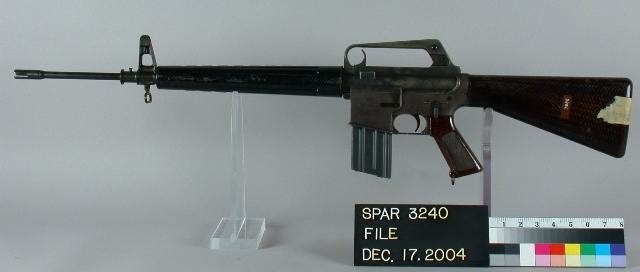
The rifle was submitted to the U.S. military for evaluation as the Armalite Rifle 15 (AR-15) but was initially rejected. The design was sold to Colt, and was eventually accepted for use as the now-famous M16. When a semiautomatic version was offered on the civilian market, Colt used the original name and sold it as the Colt AR-15.
It’s an excellent design and the patents expired a very long time ago, so many different manufacturers now make versions of the gun as well as parts. Since they’re all based on the same design, parts from different manufacturers are generally interchangeable.
The design has many advantages for the civilian shooter:
Low recoil (mostly due to the cartridge)
Accurate enough for competition shooting
Inexpensive
Parts from different manufacturers are interchangeable
Ammunition is abundant and cheap
Can be converted to fire other calibers
Inexpensive and modular, and capable of being reconfigured for many purposes, it’s like the 1960s hot rod of guns.
If you want the long version of the history of the AR-15/M16 rifle, Pew Pew Tactical (I’m not making up that name) has a good, detailed write up at the link.
Short barreled rifles (SBR) and handguns
Now is the right time to take short detour and explain part of the proposed semiautomatic assault weapon ban:
A pistol with a removable magazine and one of: …the ability to accept magazines outside the grip, is a semiautomatic version of an automatic firearm...
This is clearly a reference to a popular variation of the AR-15 called an AR pistol. Currently, rifles with barrels less than 16” long are classified as “short barreled rifles” and although legal, must be registered with the ATF. (The standard issue M4 carbine of the U.S. military has a 14.5” barrel, by the way.)
Here’s an example of an AR pistol, sold by Springfield Armory:
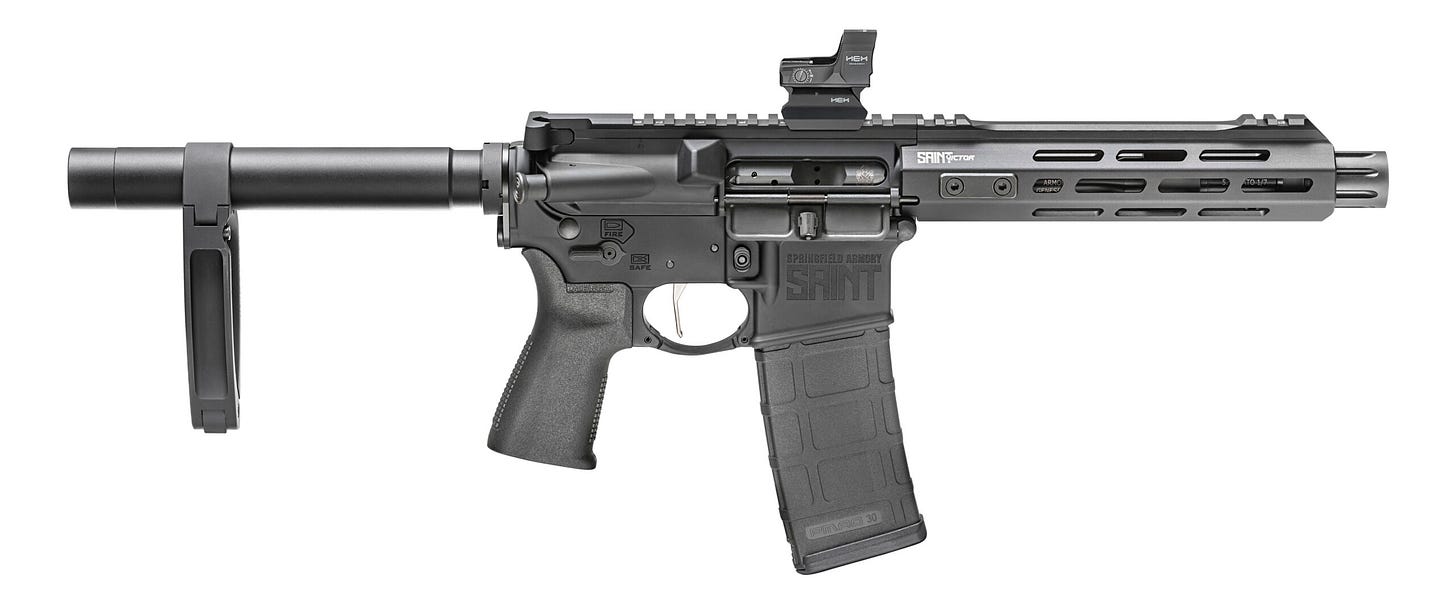
The AR design uses something called a buffer, which is contained in a tube that extends out the back of the gun and is normally hidden inside the stock. The manufacturers of AR pistols replace the stock with a brace to strap the buffer tube to the user’s forearm so it can be fired with one hand.
Since it no longer has a shoulder stock, per the ATF definition the weapon is now a handgun and can have any length barrel. Here’s another example, sure to trigger gun-ban fanatics everywhere (that’s a brace at the back, not a stock).
While we’re looking at these, it’s a good time to point out that barrels this short will result in a significant reduction in muzzle velocity, and therefore effective range, of these weapons.
The 5.56 NATO/223 Remington cartridge
So an AR-15 is just a civilian version of a military rifle, but without the feature that made it useful as a military weapon. So why did it initially become popular? A lot of that is due to that lower power cartridge.
The 5.56 NATO is the most common chambering for civilian AR-15 style rifles and is the same cartridge used by the U.S. military. How scary is this round4?
Much controversy arose about its effectiveness in stopping a determined enemy, but what was obvious was that the long-range performance of the little bullet (designated M193) was poor. It was adequate at up to 300 m when fired from a full- length (20" / 508 mm) barrel, but more like 200 m in the short-barrelled carbines which gradually began to appear. (Williams)
As mentioned previously, the ideal cartridge for a military assault rifle is one that’s just powerful enough to do the job. That’s the 5.56 NATO in a nutshell.
A little detour about the difference between 5.56 NATO and 223 Remington
The civilian version of the The 5.56 NATO cartridge is the 223 Remington, and the two cartridges are identical in dimensions. The only difference is the maximum chamber pressure rating, which is slightly higher for the 5.56 NATO - resulting in slightly higher muzzle velocity for a given bullet weight.
For the rifle, there’s a small difference in the inside dimensions of the barrel (where the cartridge seats, not the main barrel diameter) to maintain a proper safety margin with the increased pressure. As a result, most AR-15s use barrels designed for 5.56 NATO and can fire either cartridge.
But that change to the barrel also made the rifle slightly less accurate, so 223 Remington-only barrels are also available. There are some more details about the bullet grains and barrel rifling that are important for target shooters, but for the purpose of our discussion the two cartridges are equivalent.
Why is the 5.56 NATO/223 Remington chambering so popular?
The standard reference for reloading5 is the Lyman Reloading Handbook6. This book is packed with useful info, including some background on each of the cartridge types. The 5.56/223 cartridge is cheap, easy to reload, and widely available:
The 223 Remington/5.56 NATO has become one of the most popular and versatile commercial cartridges in the United States over the last fifty years. It works well with a wide number of components and is easy and economical to reload. Remington introduced this cartridge to the commercial market in 1964 soon after its adoption by the U.S. Army as the 5.56 NATO. Much like the 7.62/308 and the earlier 30-06, ready availability of surplus GI brass nurtured its popularity. (Lyman Reloading Handbook, page 139)
The cartridge is great for target shooting and small game, but it’s unsuitable for anything deer-sized or larger.
In addition to its military service, the cartridge has been used for varmints, small game and target shooting with great success along with use by law enforcement agencies. The 223 Remington should not be considered a deer cartridge. Many states mandate the 6mm/243 bore size as the minimum caliber for whitetails. (Lyman Reloading Handbook, page 139)
Although without the range of the older, more powerful cartridges, it’s still competitive in competition shooting (this is due to the high muzzle velocity).
The introduction of 80-grain bullets by several different manufacturers allowed the AR-15/M16 series of rifle to compete head to head (shooters of the “black gun” have demonstrated) with the older .30-caliber M14/M1A rifles on the 600 yard stage of the National Match course. (Lyman Reloading Handbook, page 139)
The important point is that no one is using this cartridge because it’s incredibly powerful - in some states you can’t even legally hunt deer with it.
Summing up…
An assault rifle is a military term designating a rifle that’s controllable in fully-automatic fire and with an effective range of at least 300 meters.
An assault weapon is whatever a politician wants to ban today.
The term AR-15 refers to a family of semiautomatic weapons based on Eugene Stoner’s design for the M16. That design sacrificed power in exchange for controllable automatic fire and the ability to carry much more ammunition.
In Part 2 we’ll study a subject that might explain why so many gun control advocates push to ban the AR-15, which at its core is a light and easy to use semiautomatic rifle.
That subject is ballistic protection.
ASSAULT RIFLES AND THEIR AMMUNITION: HISTORY AND PROSPECTS, Anthony G Williams, Editor IHS Jane's Weapons: Ammunition, https://www.quarryhs.co.uk/GPC.pdf
Hallock, Richard, Col. U.S. Army (retired). M-16 Rifle Case Study. 1970. https://web.archive.org/web/20111005212837/http://pogoarchives.org/labyrinth/09/02.pdf
Complaint about sloppy translations: Per an article in The National Interest about the StG 44, “After the weapon’s success on the battlefield, it was renamed the Sturmgewehr-44 (“Storm Gun”), reportedly by Hitler himself.” This translation is wrong - where the German military used “Geschütz,” it’s translated as “gun” in English. The Germans actually produced a type of armored fighting vehicle they called a “Sturmgeschütz” or “assault gun,” which is something very different from a “Sturmgewehr.”
A “round” is military parlance for everything needed to fire a weapon once. For example this can be a single rifle cartridge, or an artillery shell plus the separate bags of propellant.
The brass cartridge case is an enormous fraction of the cost of a cartridge, so people who do a lot of shooting can save significant money by doing their own reloading. The U.S. military doesn’t use reloaded brass, so used brass from the military is cheap and abundant.
Quotes taken from: Reloading Handbook, 50th Edition by Lyman Products Corp. Fifth printing: April 2020.


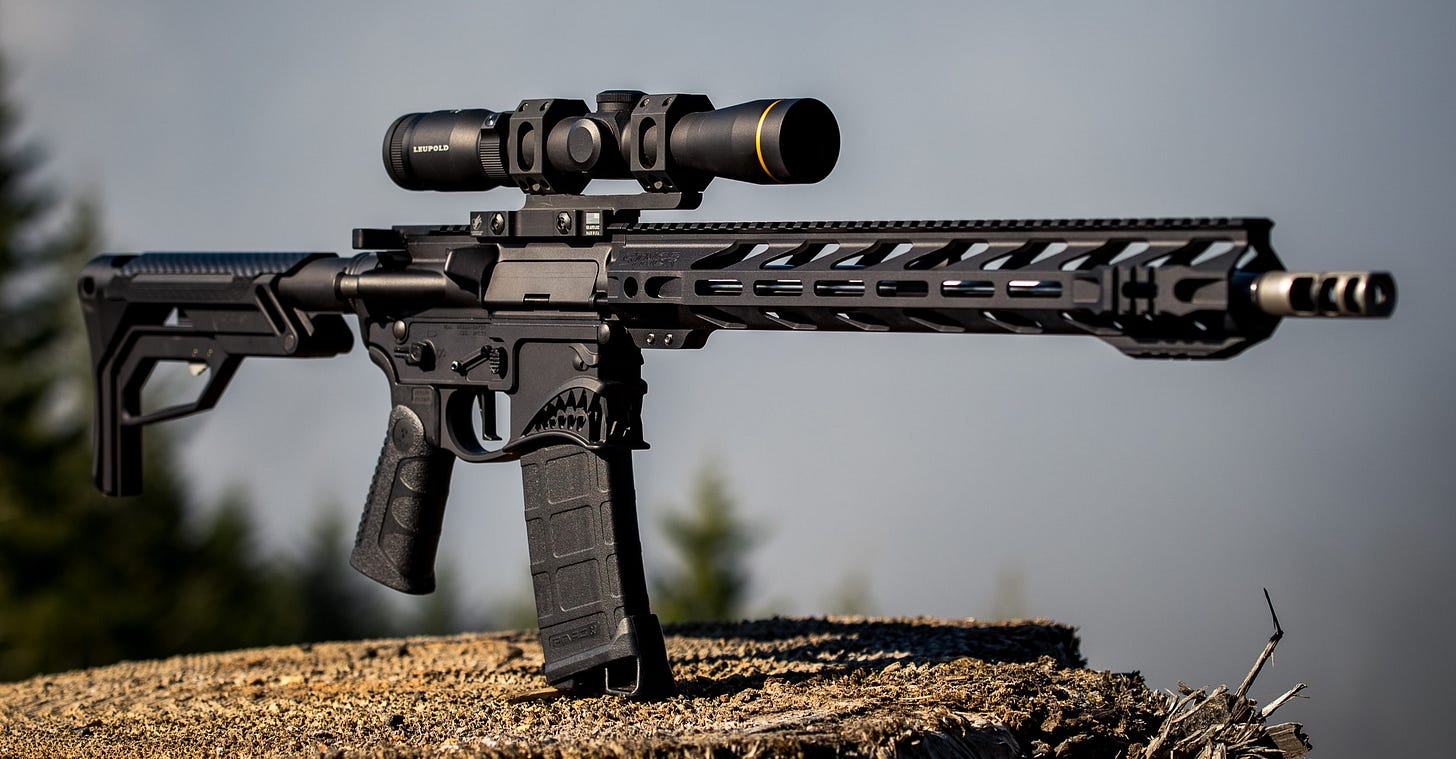
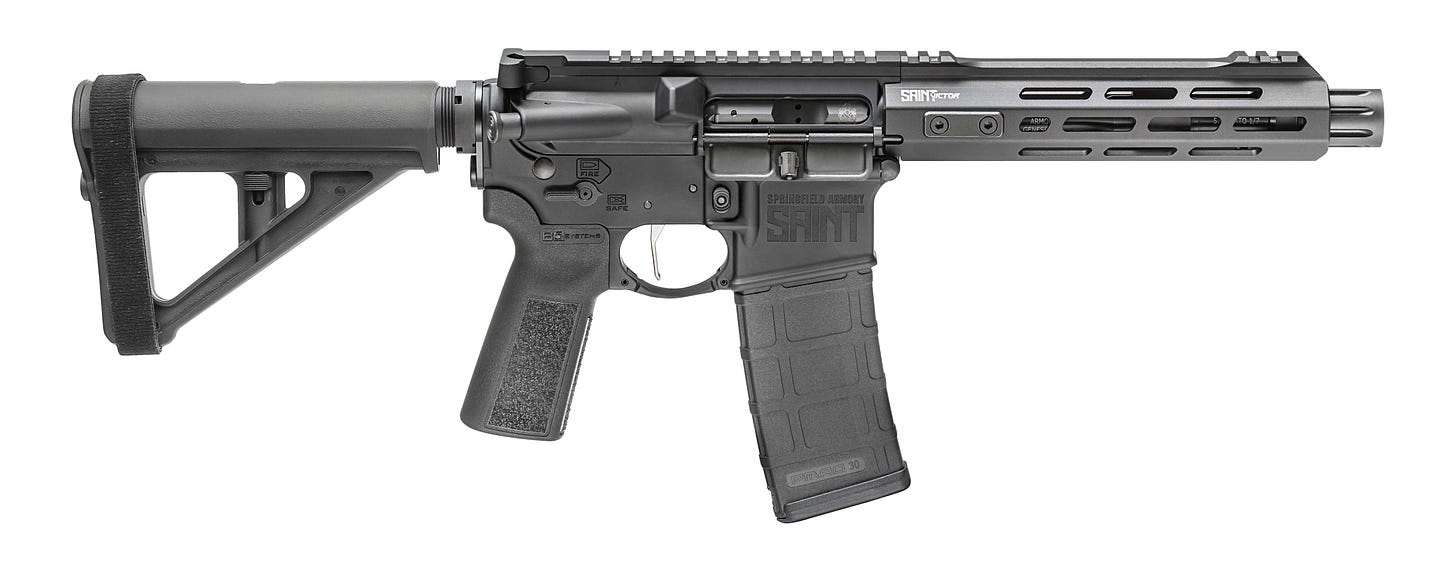
so, per the information at the end of the article the different rounds and grain load, what does the USMC use at their rifle range qualifications to shoot accurately at 500M?